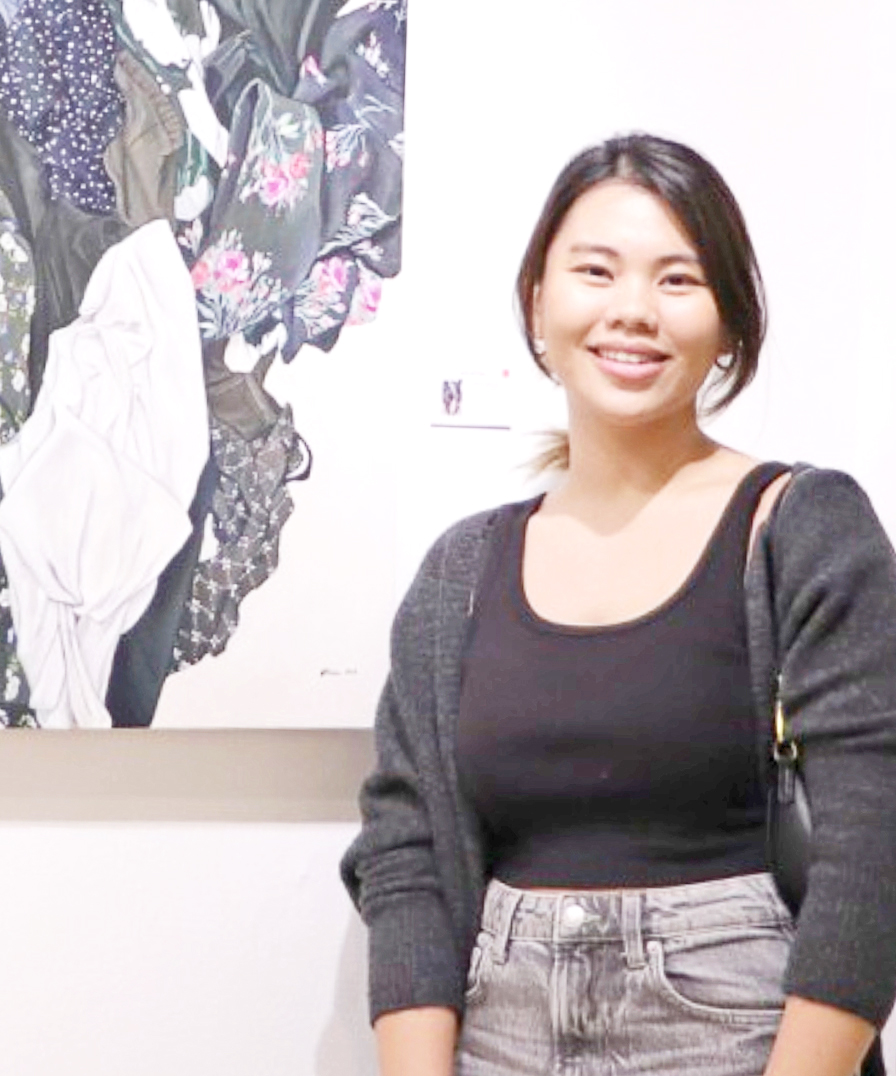By Dexter R. Matilla
Do the clothes make the person? Ask Mark Twain and the answer would be a resounding yes. Although that may not have even been an original thought by Twain (originally known as Samuel Clemens) since theologian Desiderius Erasmus Roterodamus is credited for the Latin proverb “vestis virum facit” during the Middle Ages, that statement continues to ring true in society today.
How is it that a well-suited man can immediately command power as soon as he enters a room while there is also something about a woman in a red dress who turns around to catch one’s gaze that can make any heart beat faster and slower at the same time.

Clothing choices clearly play an integral role in someone’s fate. And a look into the works of young artist Shireen Co may offer a clue as to why.
Her latest pieces from the “Laundry Room” series, which will be part of Manila Bang, which will run from Dec. 7 to 10 at Festival Mall in Alabang tells a continuing story brought about by her fascination with fabric, not just with the patterns it carries but also with the memories it holds.
“I see the laundry room as a place of convergence,” Co says. “Cleaning, mixing up and sorting, old ideas into new, new iterations of the familiar. Clothes can be a vehicle for any idea.”
She shares that being home a lot and enjoying her personal space, the domestic makes up a big portion of her visual input.
“Because of this affinity for the home, I started with an interest in painting interiors, even back in my undergrad work I often painted soft and cluttered domestic spaces,” she says. “I then focused on just the fabrics or smaller still life found in these scenes.”
Co, a magna cum laude with a BFA in Painting from the UP College of Fine Arts, adds that she has found a lot that interests her in the fabrics as there exists a connotation in the use of different cloths and clothes—the histories of hand-me-down garments, the idea of “self-portraiture” from painting the clothes that she wears to represent her as well as the act of looking into and dissecting the patterns in the fabrics.
Tangled
The abstractness of Co’s works comes from the nature of the clothing. Crumpled and intertwined either prior to or after having served its owner’s purpose, a question that can be asked is if the intended outcome was achieved? With each item of clothing therein lies a story worth sharing, pleasant or not.
“My works aim to be lighthearted, homey, domestic, busy, but also whimsical,” Co says. “Personally, another word I have in mind for this series in particular is ‘abundance’—a thankfulness for the fullness of life. I find that a number of my collectors are designers who work with clothes and fabrics as well and can appreciate my appreciation for them. I imagine the patterns to draw observers into further inspection.”

Curiously, while there is a figurative aspect to the subjects in her works, Co says that she approaches creating compositions by leaning more toward abstraction.
“I have been trying to hone in on the subjects that truly interest or represent me, then I use them as material to play with the form and color to evoke a mood or trigger visual interest,” she says.
The artist has received comments about the clothing strewn about as being in a state of undress, something she admits didn’t occur to her during painting but that she finds interesting, as the body becomes a complement of the clothes.

Also interesting is her choice of titles. There are some from this collection that are pretty much self-explanatory, such as the diptych To Sort and Gather Part 1 and To Sort and Gather Part 2 but then there’s An Indoor Picnic and Leaves on a Polycarbonate Roof that are really better enjoyed visually.
“To be honest, I find titling works to be difficult,” Co says. “I usually put it off until the end, when I could look at the finished piece as I come up with a title. I think of my compositions as abstracts, a vehicle for almost any idea, to reflect a climate and time in my life. The titles hint at those ideas. Putting together the titles is somewhat intuitive. I brainstorm until it sounds right. I also run them through my sister and get her approval before finalizing!”
While still relatively young, Co hopes to see the continued welcoming of new and young artists in the coming years.
“I hope to see more transparency in the business, in order to demystify and to help younger artists navigate our way in the art scene,” she says. “I believe that art should be accessible to both practice and consume.”

One final curiosity—does the artist prepare the clothing beforehand so as to have a point of reference when she starts working on the canvas? The practice itself can already be considered some sort of performance art even. But as with most things that are beautiful and mysterious, unraveling the answer layer by layer is perhaps an experience better left to the viewers to enjoy.
Email the author [email protected]